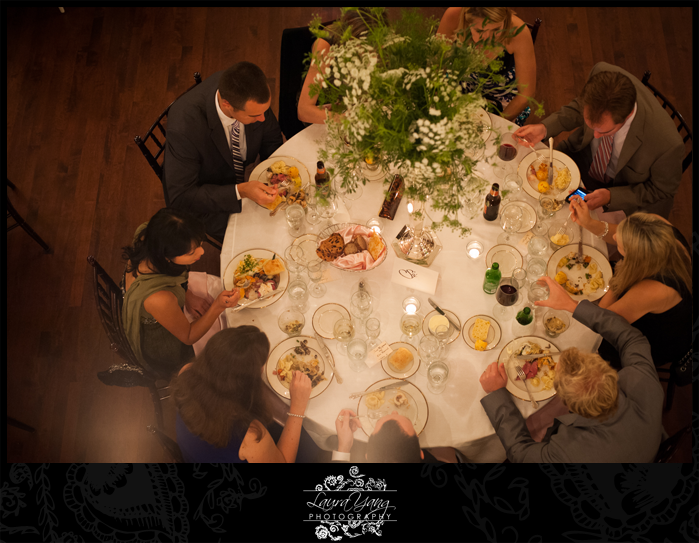Note: Photographers’ Friday is a weekly blog series directed toward professional photographers, and in some instances, serious amateur photographers. All Photographers’ Friday blog posts will assume that readers have a basic working knowledge of digital SLR cameras, but if you’re left with questions or don’t understand any of the information, don’t hesitate to ask. We love e-mails!
—
On my first mission trip as a teenager, I learned a mantra that kind of changed my life: “Semper Gumby.”
Always flexible.
It’s very applicable for teenagers on a mission trip, where plans change and work gets reassigned, and sleeping and bathroom arrangements get all sorts of messed up. It’s also really applicable for photographers. Our day-in-day-out job might seem like it’s all more of the same to someone who’s never worked as a photographer, but we know better, don’t we? No two shoots are alike, and no wedding ever goes off without a single hitch. That’s why it’s so important for photographers to be flexible and adapt to any situation on a wedding day. Because it’s our job to get the perfect shots, even if the conditions aren’t perfect. 1. Have a plan.
1. Have a plan.
Go over the wedding day with your couple. Create a timeline, and build buffer time into your timeline so that if one part of the day runs long, you’re able to cut time somewhere else to get back on track.
2. Be ready to toss your plan out the window.
If something dramatic happens — if Mom doesn’t make it to the venue on time for family portraits, or if the caterer doesn’t start setting up the reception site until an hour after it was supposed to be completed — be ready to get creative. Find little parts of the day where you can carve out just a few minutes here and there to get the shots that you weren’t able to get at the scheduled time.
3. Have a backup plan.
Most outdoor weddings have a rain plan, but do you? Keep cute umbrellas in your car, and have an arsenal of cool rain shots at the ready so your couple doesn’t feel cheated out of their portraits by inclement weather. Have a backup plan in case you lose other parts of your schedule, as well — be ready to shoot portraits after dark with umbrellas or softboxes if your time with the bride and groom gets cut short earlier in the day; scout additional locations for portraits in case (as happened to us at one of our first weddings) someone parks a car right smack in the middle of your indented portrait spot.
4. Stay calm.
Whatever you do, don’t panic. Or at least don’t panic visibly. Your bride and groom are counting on you to get them through one of the craziest days of their lives, and your attitude will go a very long way in shaping theirs. So keep a smile on your face and keep your voice steady. Stay upbeat, and keep assuring them that their wedding is wonderful — because, even if you’re having trouble doing your job, they can still be enjoying a spectacularly joyful day. And your attitude will most certainly rub off on them, for better or for worse.
5. Don’t be afraid to ask for help.
Something that has been a huge help in making sure we’ve gotten our shots has been simply asking for some assistance. Ask the caterers if they could hold off from putting the salads on just one table in the reception venue so you can shoot the details. Ask the minister to request that the guests clear the church and head to the reception immediately so you can shoot the family portraits quickly. Ask the DJ to keep you apprised of any changes to the reception timeline. Ask members of the bridal party or family to pitch in. No one will bite you. You’ll just be working together as a team.
6 Don’t be afraid to offer help.
Thinking outside of the parameters of “wedding photographer” will allow you to help the wedding day run much more smoothly. I’ve helped iron brides’ veils. I’ve made a quick run to pick up lunch for a bride. When you see a need, if you don’t have to be shooting at that moment, offer to help. Not only will your couple appreciate it, but you’ll help keep the schedule on track and make everyone more relaxed.
7. Remember that your expectations are probably the highest.
This isn’t me telling you that your photos don’t need to be high quality. This is me telling you that your own standard of excellence is probably higher than your clients’, so even if you aren’t absolutely over the moon with what you’re able to capture — due to weather, a drastically shortened schedule, or for whatever other reason — your couple will probably love their photos. You may kick yourself over certain shots, asking yourself why you didn’t ____, or why you forgot that you could _____ instead. But that is most likely because, as an artist, you expect yourself to soar to new heights every time you pull out your camera. That isn’t always going to be possible — and it isn’t your job. Your couples hire you to capture their wedding day, with all its uniqueness and excitement and mishaps. So you do the very best you can in all circumstances, and you capture each wedding day as beautifully as you can.
We’ve had our share of surprises on wedding days — all of them surprises we recovered from, and we’ve always been happy with the images we’ve delivered to our couples. Because, no matter what, we’re thinking on our toes and we’re ready to change our plans mid-shoot.
Semper Gumby, everyone.
~ Laura
Be the first to comment